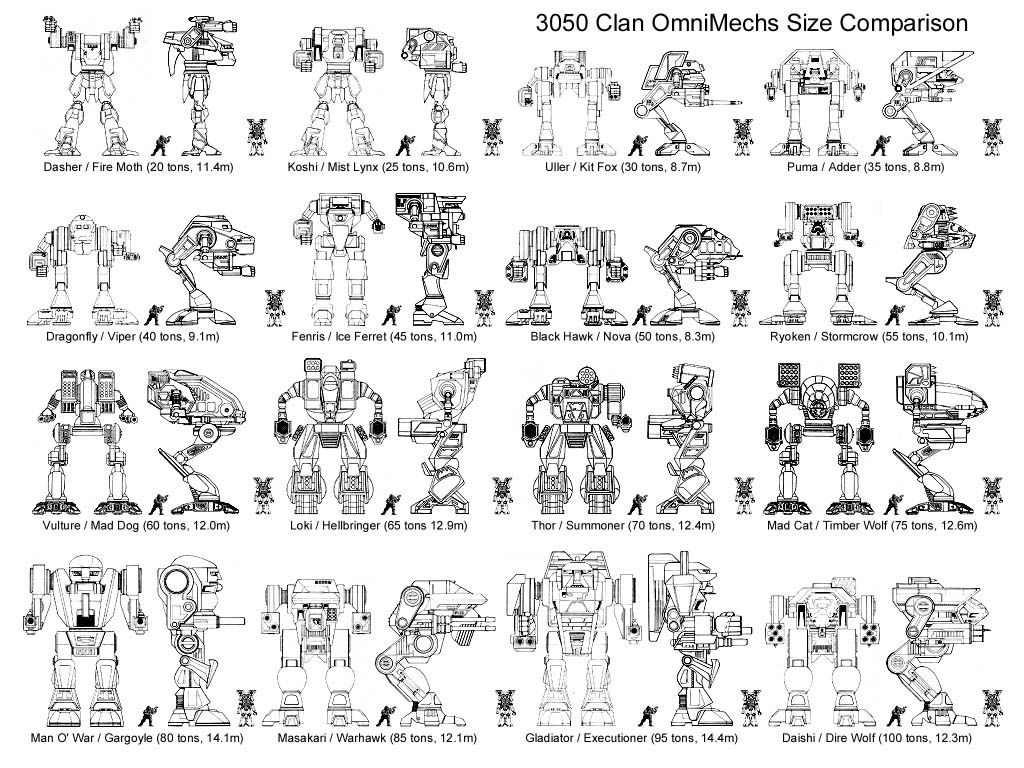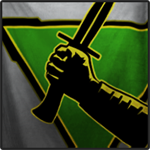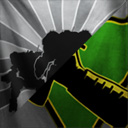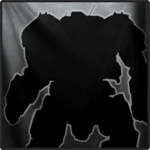
Heavy Duty Rescale
#21
Posted 29 February 2016 - 03:48 PM
So let's look at what happens when you normalize mechs volumetrically. We'll use the Atlas and the Dire Wolf as examples. The Atlas is the pancake, and the Dire Wolf is the egg, right? So when these models get adjusted, the Dire Wolf will end up a lot shorter than the Atlas... think, probably, mid-chest high. And it will have a much smaller front torso profile than the Atlas. The Dire Wolf will also have smaller total surface overall than the Atlas due to volume efficiency. That means in addition to having a smaller front profile, it will have smaller total hitboxes than the Atlas, even if the side torso profile is larger.
Now think about the Warhawk. At 85 tons, this will probably end up having about the smallest front torso profile of any assault. It's a massive change from the current standard.
If possible, the community needs to start thinking in 3 dimensions.
#24
Posted 29 February 2016 - 05:27 PM
 cazidin, on 29 February 2016 - 04:35 PM, said:
cazidin, on 29 February 2016 - 04:35 PM, said:
Sorry. I draw the line at 2 dimensions.
 ScarecrowES, on 29 February 2016 - 04:46 PM, said:
ScarecrowES, on 29 February 2016 - 04:46 PM, said:
Oooooo... geometry joke!
Lines are one-dimensional, but if you bend a line so the ends meet it becomes a circle. Circles better than lines because of Pi. Mmmm, pie. What were we discussing?
#28
Posted 29 February 2016 - 10:26 PM
 ScarecrowES, on 29 February 2016 - 03:48 PM, said:
ScarecrowES, on 29 February 2016 - 03:48 PM, said:
You are right in principle, but show me a pancake mech? Mech shapes don't differ so much that surface area varies wildly with constant mass. It DOES vary, that's true, a long, thin mech with lower arms certainly has more area per ton than a compact mech with "ears". But the difference is nothing like the difference between an egg and a pancake.
Then again, "volume" doesn't even have any gameplay relevance. Players are mostly shooting at 2d mech projections rotated around a single axis, so front and side profiles actually matter more, because they determine how easy a mech is to hit. Of course, they aren't perfect either, because the actual size and shape of the different hitboxes is lost in a general profile comparison, but we gotta work with what we have.
#29
Posted 29 February 2016 - 11:12 PM
 zagibu, on 29 February 2016 - 10:26 PM, said:
zagibu, on 29 February 2016 - 10:26 PM, said:
Then again, "volume" doesn't even have any gameplay relevance. Players are mostly shooting at 2d mech projections rotated around a single axis, so front and side profiles actually matter more, because they determine how easy a mech is to hit. Of course, they aren't perfect either, because the actual size and shape of the different hitboxes is lost in a general profile comparison, but we gotta work with what we have.
Uh...this game has 3 dimensions, not 2, sorry. You can also shoot -gasp!- up and down. Which means you also need to take into account the top down and bottom up perspectives, including any combination of the 3 axes. Considering we are talking about 'scaling' and NOT full mech remodels (unless Russ has a surprise hidden away) then your X/Y axis examples are fundamentally flawed in that you aren't basing the mech on its tonnage/geometry anymore, only its size based upon groupings of the tonnage groups in which mechs of the same tonnage would be roughly the same height, which is false.
Just let Russ/PGI rescale things in a volumetric method (like they are) and it will result in a much better scale.
Think of it this way, currently scale is a bit whacky. If you measure the volume of an Atlas, it should be equal to the volume of any other 100 ton mech. If an Atlas is used for 100% volume for a 100 ton mech, then the Direwolf is actually over 100% because it is larger than it should be.
Compare it to a glass of water. You can have a tall skinny glass, and a short wide glass. Both glasses can hold the exact same amount of water up to its rim without overflowing, even though both are different shapes their 'volume' is the same.
#30
Posted 29 February 2016 - 11:20 PM
 Queen of England, on 29 February 2016 - 03:37 PM, said:
Queen of England, on 29 February 2016 - 03:37 PM, said:
For comparison, here's a 100-ton 'mech compared to a 25-ton 'mech of a similar shape with the current scaling. The 25-ton 'mech is about 55% of the height of the 100-ton 'mech.
It makes sense, considering
"On average, an arm weighs about ~5.3% of your total body weight, depending on your gender[mech], among other factors [ie. weapons]. A leg is about 17.5%. This means for a 150lb average human being[Har. Mech], an arm weighs ~8lb and a leg weighs ~26lb."
Visually that Commando's mass is about the approximate size of the Atlas' leg. Then again the scaling is accurate as heck for the Battletech Universe. Have you seen the original Ral Partha miniatures?!
Edited by rolly, 29 February 2016 - 11:21 PM.
#31
Posted 29 February 2016 - 11:25 PM
 MauttyKoray, on 29 February 2016 - 11:12 PM, said:
MauttyKoray, on 29 February 2016 - 11:12 PM, said:
Just let Russ/PGI rescale things in a volumetric method (like they are) and it will result in a much better scale.
Think of it this way, currently scale is a bit whacky. If you measure the volume of an Atlas, it should be equal to the volume of any other 100 ton mech. If an Atlas is used for 100% volume for a 100 ton mech, then the Direwolf is actually over 100% because it is larger than it should be.
Compare it to a glass of water. You can have a tall skinny glass, and a short wide glass. Both glasses can hold the exact same amount of water up to its rim without overflowing, even though both are different shapes their 'volume' is the same.
This is true. But still military vehicle tends to be built along similar lines. There's a reason all MET Ares of similar dimensions. Always built with an economy of space. So in general their relative densities will be similar. The exceptions would be era differences. For example a Direwolf would almost certainly be more compact than a Mackie, because the technology is much more advanced, and more efficient. But a Catapult and a Marauder and a Crab would all have similar densities, and this while not perfect, volume is the best reasonable option available
#32
Posted 29 February 2016 - 11:25 PM
 rolly, on 29 February 2016 - 11:20 PM, said:
rolly, on 29 February 2016 - 11:20 PM, said:
It makes sense, considering
"On average, an arm weighs about ~5.3% of your total body weight, depending on your gender[mech], among other factors [ie. weapons]. A leg is about 17.5%. This means for a 150lb average human being[Har. Mech], an arm weighs ~8lb and a leg weighs ~26lb."
Visually that Commando's mass is about the approximate size of the Atlas' leg. Then again the scaling is accurate as heck for the Battletech Universe. Have you seen the original Ral Partha miniatures?!
I wouldn't put any value in old miniature scaling. I can imagine it was hard and there's limits on the complexity of smaller miniatures.
Back on topic, I like going back to this image every time. Its more than likely not exact, but gives a good idea of what I'm talking about. Both the Dire Wolf and Warhawk are smaller than the Executioner and Gargoyle due to their shape, even though respectively, each is less tonnage than the one above it.
Things like, the Nova, because it is so spread out and wide, is actually shorter than an Adder.

Edited by MauttyKoray, 29 February 2016 - 11:29 PM.
#33
Posted 29 February 2016 - 11:59 PM
 MauttyKoray, on 29 February 2016 - 11:25 PM, said:
MauttyKoray, on 29 February 2016 - 11:25 PM, said:
Back on topic, I like going back to this image every time. Its more than likely not exact, but gives a good idea of what I'm talking about. Both the Dire Wolf and Warhawk are smaller than the Executioner and Gargoyle due to their shape, even though respectively, each is less tonnage than the one above it.
Things like, the Nova, because it is so spread out and wide, is actually shorter than an Adder.

This also points out the issue with the Black Hawk in comparison to the Ryoken. It's wider so it should be shorter like how it is in this chart but they gave the Black Hawk a torso and never compensated its overall size for the added height. I don't fault them for giving it the torso cause sandwiching those legs between the arms and the torso like the original would mean a torso twist of something like 2 degrees and no one wants that. But now it's as tall as the Ryoken AND twice as wide while being 5 tons lighter. The rescale is going to really help it:

#34
Posted 01 March 2016 - 12:07 AM
 zagibu, on 29 February 2016 - 10:26 PM, said:
zagibu, on 29 February 2016 - 10:26 PM, said:
Then again, "volume" doesn't even have any gameplay relevance. Players are mostly shooting at 2d mech projections rotated around a single axis, so front and side profiles actually matter more, because they determine how easy a mech is to hit. Of course, they aren't perfect either, because the actual size and shape of the different hitboxes is lost in a general profile comparison, but we gotta work with what we have.
Perhaps the best example of the "pancake vs egg" layout differential is between an Atlas and a Dire Wolf. The Atlas is a very tall, very wide mech, but is also has very little depth. The torso of the mech is not significantly thicker than the legs, for instance. Meanwhile, the Dire Wolf (and I don't have the in-game model in front of me to confirm exactly) I believe is at least 3 times deeper than the torso on the Atlas. Given the more compact nature of the chassis, and the concentration of a huge portion of the mass of the mech in the "egg" of the torso, the Dire Wolf should be much shorter than an Atlas. It should look, from the front profile especially - but from any angle compared to the front profile of the Atlas - to be a much smaller mech in comparison.
In fact, this sort of comparison will be true of any humanoid mech in a given weight class compared to a non-humanoid mech in that class.
#35
Posted 01 March 2016 - 12:22 AM
 Queen of England, on 29 February 2016 - 03:37 PM, said:
Queen of England, on 29 February 2016 - 03:37 PM, said:

For comparison, here's a 100-ton 'mech compared to a 25-ton 'mech of a similar shape with the current scaling. The 25-ton 'mech is about 55% of the height of the 100-ton 'mech.

That is a very cool comparison, with correct height/volume scaling. So, actual lights in game are just a bit denser than heavies ... which is fine. All sorts of things could affect density e.g. maybe bigger engines have more low-density shielding.
#36
Posted 01 March 2016 - 12:30 AM
I agree with some of the points made about mass, density, profile and whatnot but the playability and general design of the mech should be considered and any changes are then "balanced" accordingly.
Sure, there are huge differences between the Atlas and Daishi but I think those 2 mechs are a good example of how comparisons and balance should be made. The Atlas is tall but has little depth yet the Daishi is almost like a big square block that is just so easy to hit at any angle. For those 2 mechs in particular I think the overall scaling is just fine.
On the other side of the coin we have mechs like the Hankyu. It has quite a slim profile that isn't very easy to hit accurately, even as far as light mechs go. I would go as far as saying that the "volume" or general scale of it needs to be increased slightly.
I hear talk of the Marauder but to be fair I think this particular mech is excellently scaled. I would rather the Warhammer be scaled down slightly.
Let's also not forget that some mechs may have deliberately been designed to be larger than their weight suggests. Without throwing in the lore curveball, you could say some have a more hollow or spacious internal structure whereas some were designed to be as small as possible with a highly dense internal structure.
So really, there is no quick fix. There is no general algorithm that PGI can create, click go and have "perfectly scaled" mechs come out of it. At the end of the day, any problematic chassis will have to looked at individually to find that sweet spot for its weight vs intended design vs gameplay.
#37
Posted 01 March 2016 - 12:42 AM
 Roland Skinner, on 01 March 2016 - 12:22 AM, said:
Roland Skinner, on 01 March 2016 - 12:22 AM, said:
That is a very cool comparison, with correct height/volume scaling. So, actual lights in game are just a bit denser than heavies ... which is fine. All sorts of things could affect density e.g. maybe bigger engines have more low-density shielding.
As far as density differentials between lights scaling up to assaults, it makes a little sense from the visual cues of the mechs we have here. I notice a lot of ventilation paneling on heavies and assaults, little of it on mediums and none on lights that I recall offhand. So perhaps heavy and assault class heat dissipation requires air circulation when air is available, but lights not so much. Shorter distances for the heat pipes making ventilation optional?
<shrug> I only mention it due to volumetrics: air circulation / intakes / exhaust would indicate empty interior space, and might therefore be excluded.
#38
Posted 01 March 2016 - 01:00 AM
- those more square/round/not-humanoid mechs should be a little bigger in volume than humanoid ones so we won't end up needing to buff the humanoid ones heavily to keep them effective (please note that humanoidal ones already usually have a lot more quirks, and for a good reason. The toughness of some non-humanoids like the crab or stalker comes almost exclusively from their overall profile)
- 20, 25 and 30 tonners should be a little smaller than the volume suggest, because they can be one-shotted easily and usually have weak firepower
- 35 and 40 tonners CAN be a bit smaller too, but not that much as lighter ones, because they can carry noticeably better firepower, are much harder to one shot and still break the 140km/h, which makes quite the difference (cicada is being brought down mostly by its oversized center torso, on speed/firepower scale it is in a great place)
- heavies, especially 75-tonners, could be slightly oversized to tone down the fact that they represent the best balance between speed+agility/armor/firepower.
- 100 tonners (maybe 95 tonners too) should be also a bit oversized just to keep them different from the rest of the crowd (durability quirks should probably help them not suffer from this fact).
Edited by Prof RJ Gumby, 01 March 2016 - 01:03 AM.
#39
Posted 01 March 2016 - 08:05 AM
 Prof RJ Gumby, on 01 March 2016 - 01:00 AM, said:
Prof RJ Gumby, on 01 March 2016 - 01:00 AM, said:
- those more square/round/not-humanoid mechs should be a little bigger in volume than humanoid ones so we won't end up needing to buff the humanoid ones heavily to keep them effective (please note that humanoidal ones already usually have a lot more quirks, and for a good reason. The toughness of some non-humanoids like the crab or stalker comes almost exclusively from their overall profile)
- 20, 25 and 30 tonners should be a little smaller than the volume suggest, because they can be one-shotted easily and usually have weak firepower
- 35 and 40 tonners CAN be a bit smaller too, but not that much as lighter ones, because they can carry noticeably better firepower, are much harder to one shot and still break the 140km/h, which makes quite the difference (cicada is being brought down mostly by its oversized center torso, on speed/firepower scale it is in a great place)
- heavies, especially 75-tonners, could be slightly oversized to tone down the fact that they represent the best balance between speed+agility/armor/firepower.
- 100 tonners (maybe 95 tonners too) should be also a bit oversized just to keep them different from the rest of the crowd (durability quirks should probably help them not suffer from this fact).
So, if I'm reading between the lines correctly here... you're asking for a Cicada meta.
#40
Posted 01 March 2016 - 11:22 AM
 MauttyKoray, on 29 February 2016 - 11:12 PM, said:
MauttyKoray, on 29 February 2016 - 11:12 PM, said:
Wow, really? And if you take a front and side profile of both glasses, and correctly deal with the different scalings of area vs volume, you get a pretty good comparison of both without needing any actual volume measurements. But please, do explain 4th grader geometry in more detail, maybe it's useful for someone.
Also, please watch some videos of matches and count the time someone is shooting at another player at a vertical angle steeper than 15° (0° being at the same height as the target). I can tell you the result already, because I've done exactly that. It's in less than 20% of all engagements.
 ScarecrowES, on 01 March 2016 - 12:07 AM, said:
ScarecrowES, on 01 March 2016 - 12:07 AM, said:
So, the Atlas is supposed to be the pancake? I'm sorry, but the surface area between and Atlas and a Dire Wolf are much closer than those between a pancake and an egg of the same volume. You are exaggerating the difference massively. I'm not saying there isn't any difference, there certainly is, but it is nowhere big enough to render front+side profile comparisons useless.
 Prof RJ Gumby, on 01 March 2016 - 01:00 AM, said:
Prof RJ Gumby, on 01 March 2016 - 01:00 AM, said:
Actually, in the case of the Stalker, it's not overall profile, but well-shaped hitboxes. The CT is very hard to hit. Compare it to a Catapult, which has a similar torso profile, but is very squishy, because of different hitbox distribution.
9 user(s) are reading this topic
0 members, 9 guests, 0 anonymous users


































